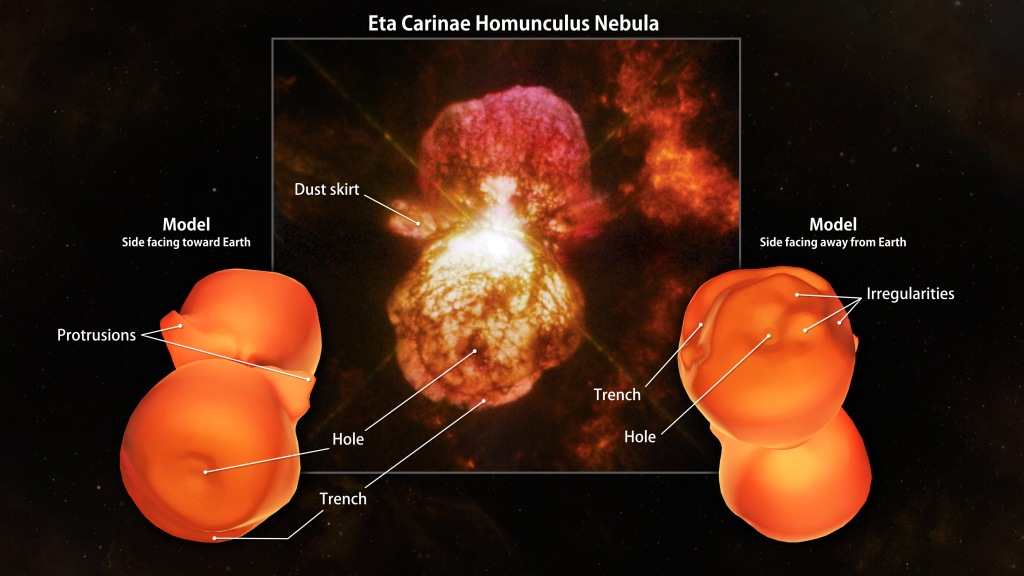JULY 17, 2014
3D Homunculus Nebula
EXPLANATION
If
you’re looking
for something
to print with that new
3D printer, try out a copy of the Homunculus Nebula.
The dusty, bipolar cosmic cloud is around 1 light-year across
but is slightly
scaled
down for printing to
about 1/4 light-nanosecond or 80 millimeters.
The full scale Homunculus surrounds Eta Carinae,
famously unstable
massive stars in a binary system
embedded in the extensive
Carina Nebula
about 7,500 light-years distant.
Between 1838 and 1845, Eta Carinae
underwent the Great Eruption becoming
the second brightest star in planet Earth’s night sky
and ejecting the Homunculus Nebula.
The
new 3D model of the still expanding Homunculus
was created by
exploring
the nebula with the European Southern Observatory’s
VLT/
Image Credit
NASA, Goddard Space Flight Center/SVS - Inset: NASA, ESA, Hubble SM4 ERO Team


